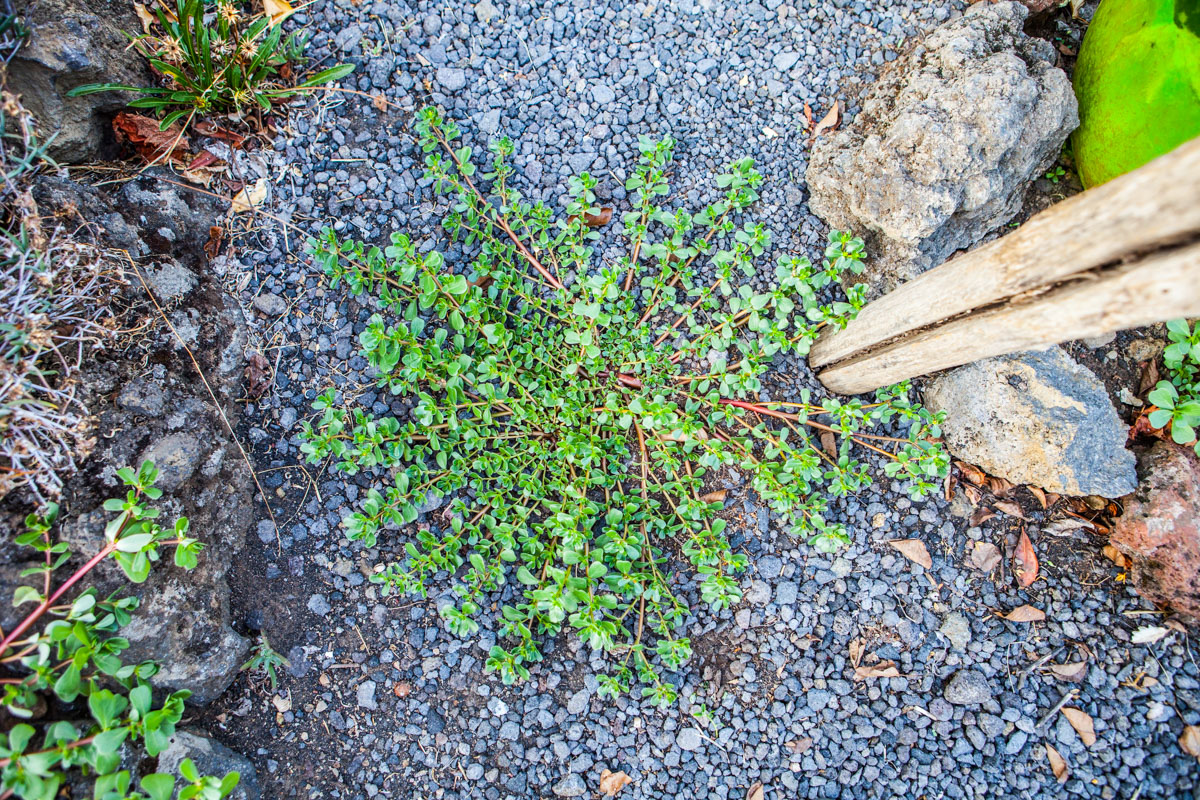Porcellana – Weed & Super Food
You’ll find it trying to take over vegetable gardens, growing out of stone walls and sprouting from sidewalk cracks. Given that it grows in so many climates and on every continent except Antartica, you probably won’t have to look far to discover it. Considered a pesky, invasive weed, the secret of this wild plant is that it’s also one of the most nourishing foods you can eat – not to mention it tastes delicious.
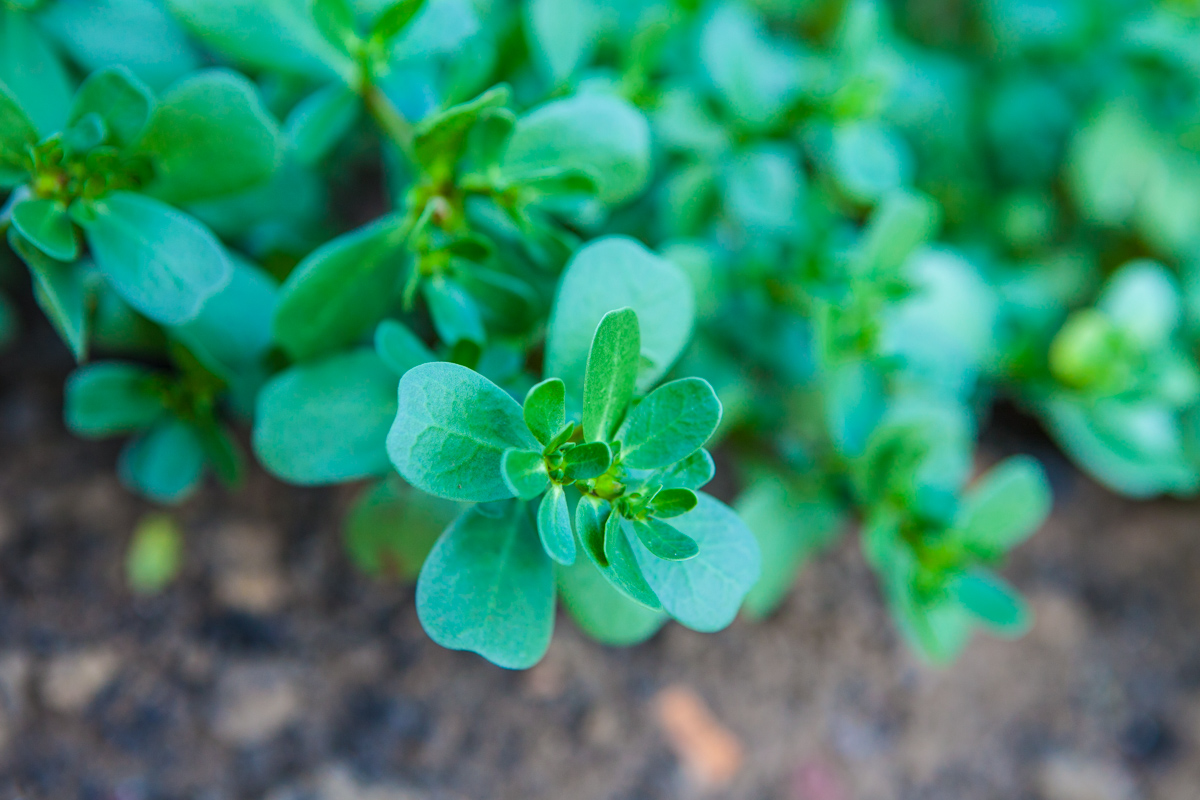
Called purslane in English (also pigweed, hogweed, pursley or duckweed), porcellana is a member of the portuacaceae family which also includes one of my favorite flowers. For years I’ve planted portulaca in my gardens and flower boxes for a burst of bright, cheery colors, but it wasn’t until coming to Sicily that I was introduced to it’s edible, nutrient rich cousin.
Porcellana grows in a circular pattern, though this isn’t always noticeable when it’s mixed in with other weeds or crawling along rocks. It’s stems can have a reddish hue and the leaves have a teardrop shape.
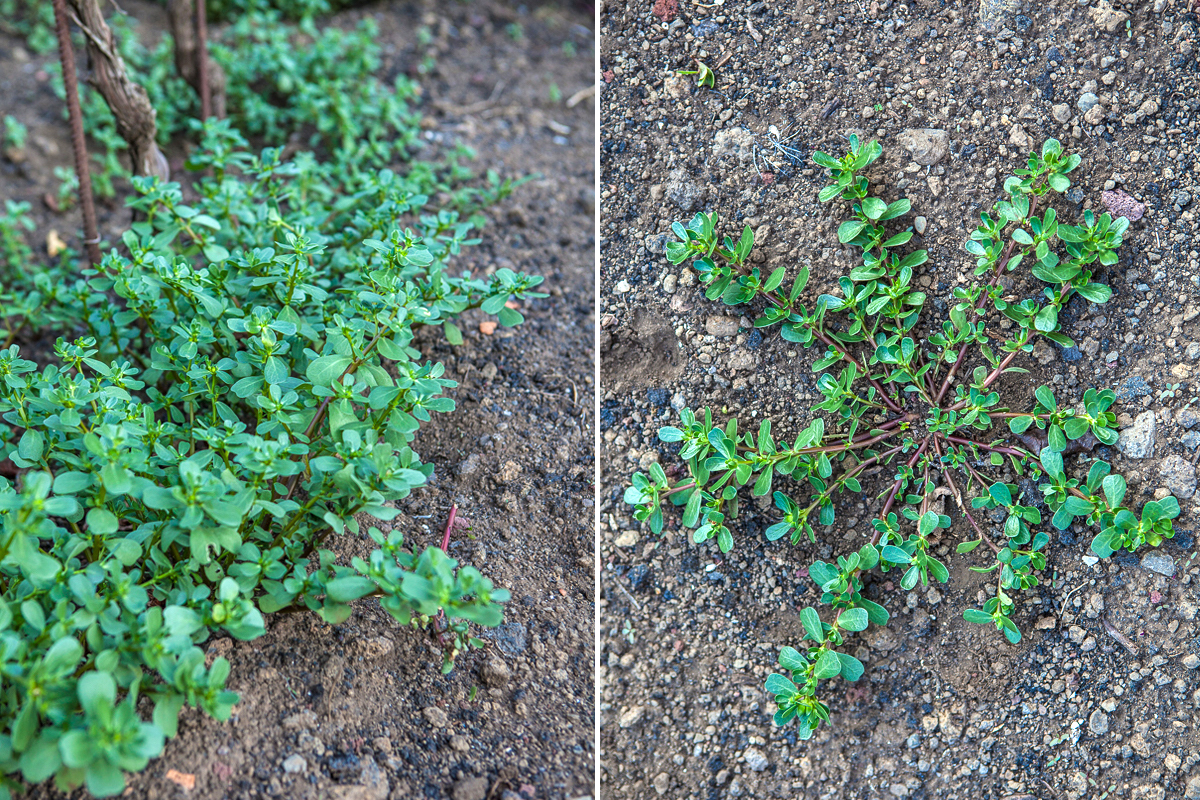

Porcellana is a succulent with a crisp, slightly lemony taste and a crunch almost like a cucumber, so it’s a perfect addition to almost any fresh salad. We have a friend who regularly brings us porcellana from his garden, so much of it in fact that we needed to learn some new ways to eat it.
One of the things that convinced me to get creative with porcellana was learning that among other healthy compounds, it contains more Omega 3 fatty acids than any other green plant; even more than many fish oils. Purslane-fed chickens lay eggs that have twenty times the Omega 3’s of regular eggs. With the high cost of wild salmon and all the pollutants in our oceans, why not get some of your Omega 3’s for free, from a common weed? If you are vegetarian or vegan, you can skip the chia seeds and make yourself a nice porcellana salad or throw a handful into your morning smoothie.
This little weed’s health benefits don’t stop at essential fatty acids. It’s also packed with fiber, vitamin A, vitamin C, vitamin E, B-family vitamins, iron, magnesium, manganese, potassium, calcium and betalain (a powerful antioxidant). It’s no wonder that porcellana is considered a medicinal plant in many cultures from traditional Chinese medicine to Indian Ayurveda. In Sicily, my older friends say they all grew up collecting and eating porcellana, mostly in salads and especially with fresh tomatoes.

In summer, I love to eat cold salads and here are two ultra simple recipes I’ve been making with porcellana. You can eat the thinner, smaller stems but to prep the porcellana I just pick the leaves off and wash them. You can also stir fry it or add it to soups and stews, which led me to my other porcellana experiment – adding it to a frittata.
So the next time you’re pulling weeds from your garden, see if you find this tasty, nutritious plant and bring it back to your kitchen. Buon Appetito!
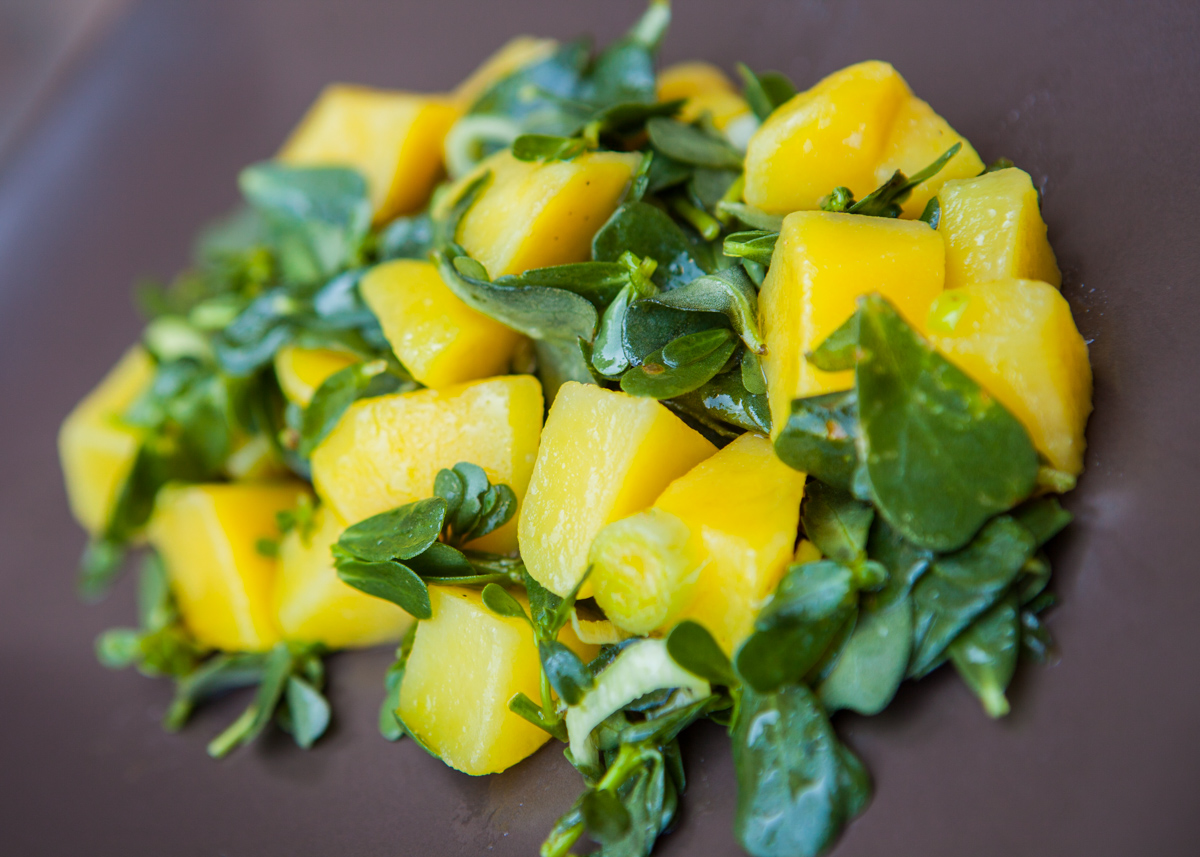
Porcellana Potato Salad
6 small to medium potatoes
2 cups porcellana leaves
4 scallions, sliced thin
Cut up and then cook the potatoes until just tender. Drain and plunge into cold water. Let cool. Combine with porcellana and dress with olive oil, lemon, salt and pepper to taste
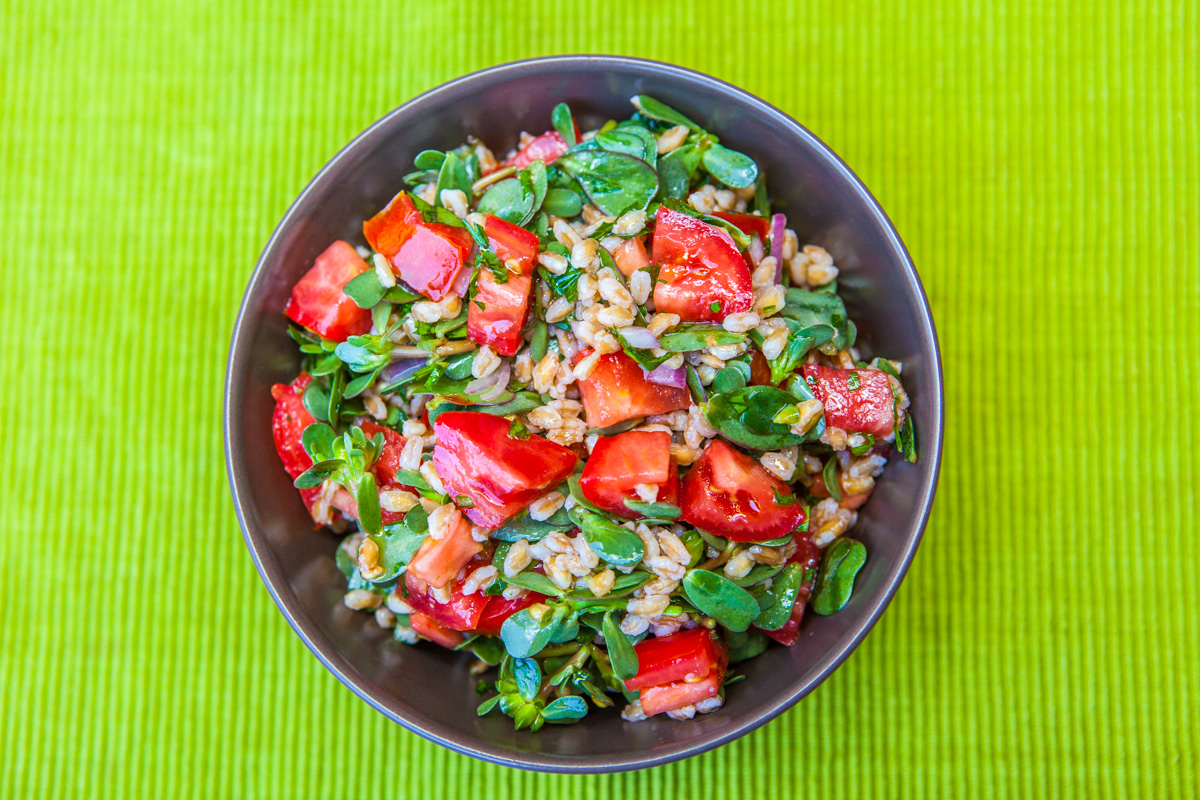
Farro, Porcellana and Tomato Salad
1 cup farro
2 cups water
2 cups purslane
1/2 diced red onion
1 1/2 cup chopped tomatoes
Olive oil, lemon, salt and pepper
Bring water to a boil with a pinch of salt, then add farro. Simmer just until tender, about 30 minutes. When done remove from heat and let stand until room temperature. Combine onion, tomatoes and purslane with olive oil, lemon, salt and pepper. When farro has cooled add it to the salad and mix well to combine.
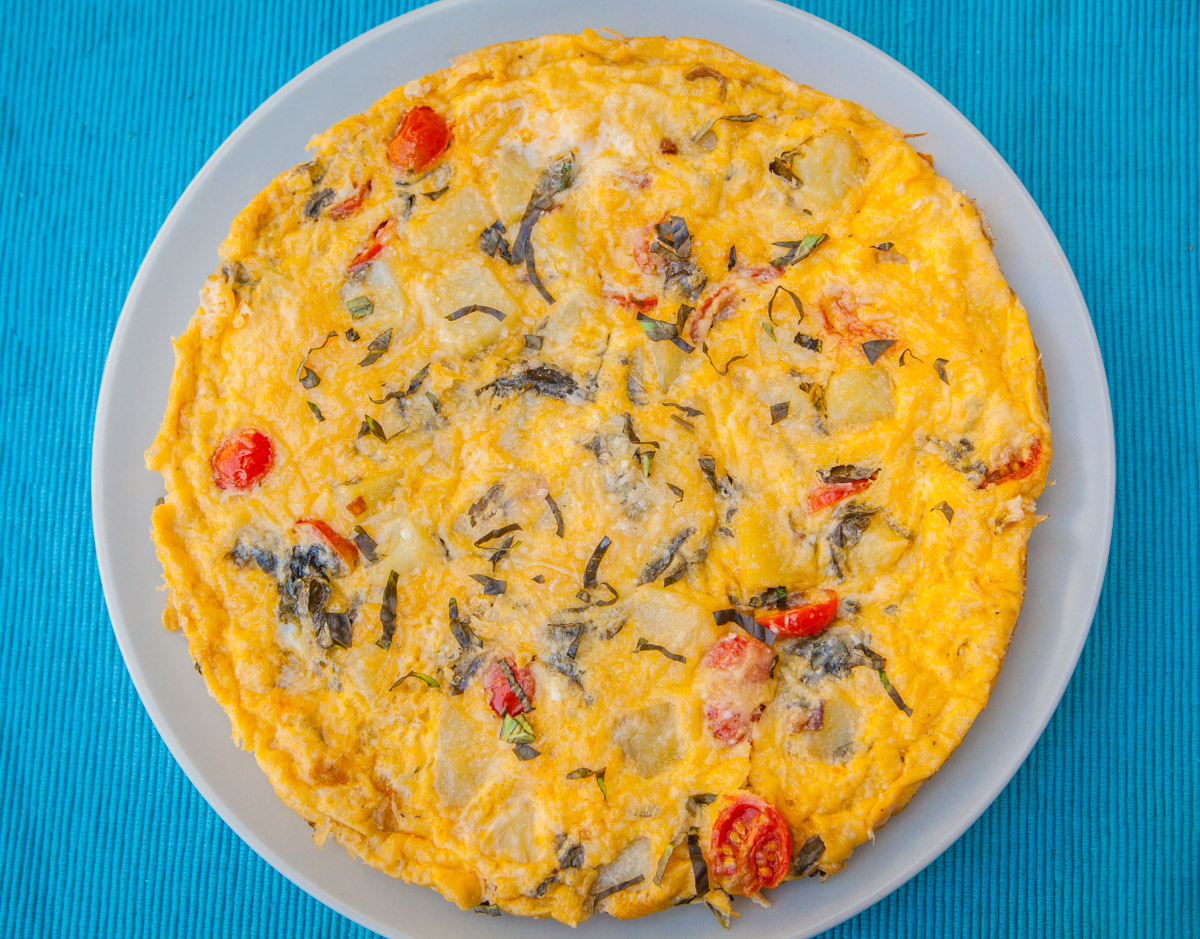
Porcellana Frittata
2 tbsp olive oil
2 green onions
2 cups purslane leaves
1 cup cherry tomatoes
2 small potatoes
1/2 cup shredded cheese – any kind you like
6 eggs
Salt and pepper to taste
Peel, chop and boil potatoes until they are just tender. Heat oil in skillet and cook green onions and purslane until wilted, about 3-4 minutes. Stir in tomatoes and potatoes. Add salt and pepper to taste. Beat the eggs, mix in cheese and pour into the pan over the other ingredients. As the eggs start to cook use a spatula to slide under the cooking eggs, tipping the pan to allow uncooked eggs to reach the bottom. When eggs are almost set, put the pan into the oven and broil the top to finish.

